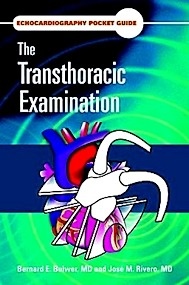Reseña o resumen
Schizophrenia is one of the most complex and disabling diseases to affect mankind. Relatively little is known about its nature and its origins, and available treatments are inadequate for most patients. As a result, there are inevitable controversies about what causes it, how to diagnose it, and how best to treat it. However, in the past decade, there has been an explosion of new research, with dramatic discoveries involving genetic etiology and epidemiological risk factors. There has also been a catalog of new drugs coming to market, and controversy about the relative advantages and disadvantages of newer compared with older therapies. In addition, developing technologies in genomics, molecular biology and neuroimaging provide streams of new information.
This book represents a definitive, essential, and up-to-date reference text on schizophrenia. It extensively and critically digests and clarifies recent advances and places them within a clinical context. The Editors (one American and one British), highly respected clinical psychiatrists and researchers and acknowledged experts on schizophrenia, have again assembled an outstanding group of contributors from the USA, UK, Europe and Australia, It will be of value to practising psychiatrists and to trainees, as well as to clinical and neuroscience researchers interested in keeping up with this field or coming into it.
The book consists of four sections: descriptive aspects, biological aspects, physical treatments, and psychological and social aspects. It reviews the theoretical controversies over symptomatology, classification and aetiology (particularly pertinent as DSM-V is being developed), the relationship of schizophrenia to the other psychoses, the significance of positive and negative symptoms and pre-morbid personality. It describes a variety of approaches to integrating the vast research data about schizophrenia, including neurodevelopmental, genetic, pharmacological, brain imaging and psychological findings. The biological treatment section reviews the comparative efficacy of various drugs, the management of drug-resistant patients and both neurological and metabolic complications. The final section looks at psychological therapies, social outcomes, and the economics of schizophrenia.
Table of Contents
Part I DESCRIPTIVE ASPECTS.
1. The concept of schizophrenia: past, present, and future (Nancy C. Andreasen).
2. The schizophrenia construct: symptomatic presentation (Celso Arango and William T. Carpenter).
3. Child and adolescent schizophrenia (Chris Hollis and Judith Rapoport).
4. Late onset schizophrenia (Robert Howard and Dilip V. Jeste).
5. The Schizophrenia Spectrum Personality Disorders (Eran Chemerinski and Larry J. Siever).
6. The prodome of schizophrenia (Shôn Lewis and Jean Addington).
7. Course and outcome (Wolfram an der Heiden and Heinz Häfner).
8. Neurocognitive Impairments in Schizophrenia: Their Character and Their Role in Symptom Formation (Terry E. Goldberg, Anthony David, James. M. Gold).
Part II BIOLOGICAL ASPECTS.
9. The secondary schizophrenias (T. M. Hyde and M.A. Ron).
10. Schizophrenia: The epidemiological horizon (A. Jablensky, J.B. Kirkbride and P.B. Jones).
11. Environmental risk factors for schizophrenia ( John McGrath and R.M. Murray).
12. Classical Genetic Studies of Schizophrenia (Brien Riley and Kenneth S. Kendler).
13. Genetic Associations in Schizophrenia (Michael C O'Donovan and Michael J Owen).
14 . Intermediate phenotypes and genetic origins (Tyrone Cannon).
15. Electrophysiology of schizophrenia (Georg Winterer and Robert W McCarley).
16. Structural Brain Imaging in schizophrenia and related populations (Stephen M. Lawrie and Christos Pantelis).
17. Functional Brain Imaging in schizophrenia (Andreas Meyer-Lindenberg).
18. Neuropathology of schizophrenia (P.J. Harrison, D.A. Lewis and J.E. Kleinman).
19. Schizophrenia as a neurodevelopmental disorder (Daniel R. Weinberger).
20. Dopamine and Schizophrenia (Anissa Abi-Dargham and Anthony Grace).
21. Contributions of glutamate and GABA systems to the neurobiology and treatment of schizophrenia (John H. Krystal, M.D. and Bita Moghaddam).
22. Animal Models of schizophrenia (Barbara K. Lipska and Joseph A. Gogos).
Part III BIOLOGICAL TREATMENTS.
23. The pharmacology and neuroscience of antipsychotic drugs (John L. Waddington, Colm O'Tuathaigh and Gary J. Remington).
24. Principles of pharmacological treatment in schizophrenia (Thomas R. E. Barnes and Stephen R. Marder).
25. Comparative efficacy and effectiveness in the drug treatment of schizophrenia (John Geddes, Mark Weiser, John M Davis and Grigori Joffe).
26. Approaches to treatment resistant patients (Stefan Leucht, Cristoph U. Correll and John M. Kane).
27. Neurological complications of antipsychotic drugs (P. M. Haddad and V. S. Mattay).
28. Metabolic and other side effects (John W. Newcomer).
Part IV PSYCHOSOCIAL ASPECTS.
29. Schizophrenia and psychosocial stress (P. E. Bebbington and E. Kuipers).
30. Mental health services for schizophrenia patients (Tom Burns and Bob Drake).
31. Societal Outcomes in Schizophrenia (Ian Kooyman and Elizabeth Walsh).
32. Psychological treatment of psychosis (Gillian Haddock and Wiliam Spaulding).
33. Economics of the treatment of schizophrenia (N.H. Covell, S.M. Essock, and L.K. Frisman).

